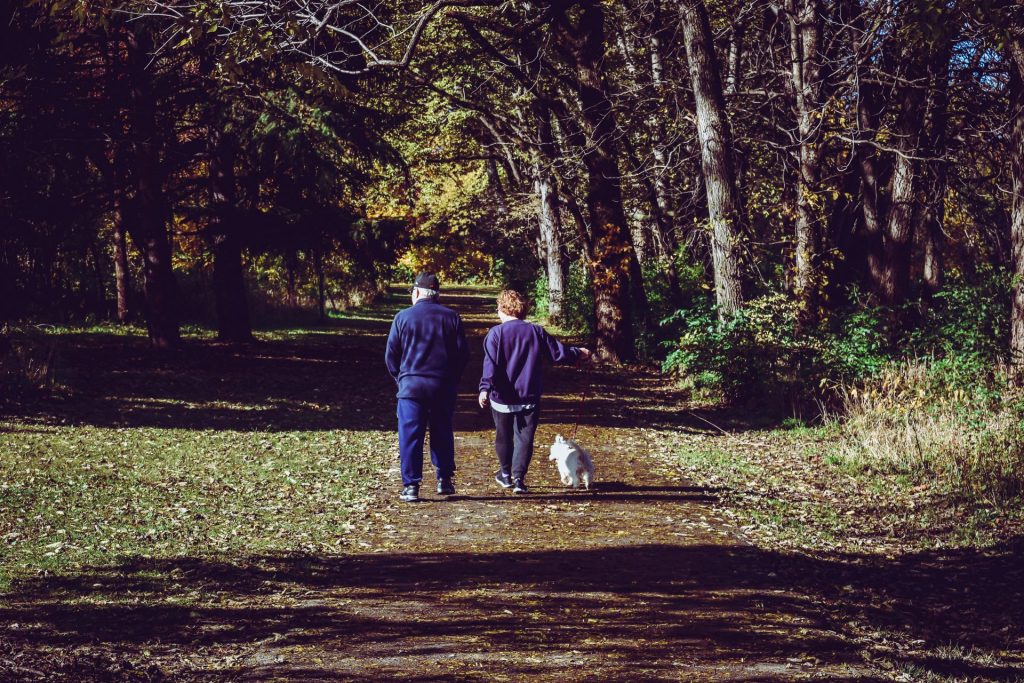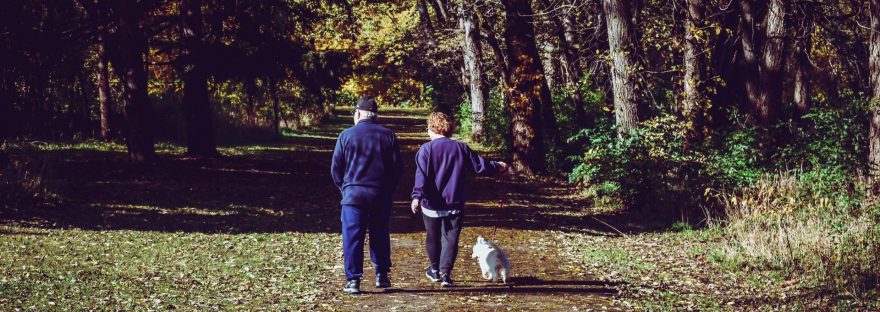August 29
There is a man who lightly jogs in the park. I say lightly because it’s a cross between walking and trudging, not quite the jogging where your legs extend, and you take wide leaps at a quick pace. His feet shuffle, he bounces up and down, but a speed walker could keep pace with his movement. I cannot see much of him, the person, just the same plaid shorts; the same black shirt; his wide cotton hat, its brim flapping over his eyes where sunglasses conceal their color; and a bushy, unkempt grey beard. But he’s happy, consistent, and says hello when he sees me.
Another man walks with two poles, not walking sticks, but poles, and I have gathered by his uneven gait and leg braces that he is physically challenged. In fact, I see many people there who are in similar situations with leg braces, or a prosthetic limb, or in a wheelchair, all who are getting their physical therapy by walking or riding in the park. They encourage me to keep going when I am tired, or pain shoots through my legs in various places I forget exist.
Many elderly walk in the morning, some with their dogs, with buddies, or alone. Two gentlemen I see frequently together are always in good spirits and are friendly. Another woman I am getting to know each time we see one another and she, too, is a delightful person. Always smiling, waving to others, stopping to talk to the dog walkers, speaking excitedly to the children in the strollers who gleefully respond or stare at her in wonder.
The couples who walk together offer fascinating insights. One I watched this morning, holding hands. He was taller than she with a hump on her back and bent over, but they walked in sync, as if they were one body. Familiar with one another’s rhythm, the graceful movements they likely learned a long time ago, and have kept pace with ever since.
Another couple, fairly new to the usual crowd, are young with two children. The first time I saw them she, donning leggings and Sketchers, was looking down at her phone; he was dressed in shorts and Sketchers and was absorbed with whatever was dribbling through his earbuds. They both walked leisurely along the scenic paths as they held Starbucks’ coffees, and I gathered they were there for the ambiance, the state of being outside, not necessarily for the exercise. Young children’s voices drifted over the trees, echoing in surround sound without a focal point of its source, the bodies invisible. Mom and dad never turned in their direction or checked to see if they were with them, unconcerned or unaware of their children’s presence. Eventually the children appeared and ran to catch up with the two figures sauntering along.
I saw them again today more than once, and the second time I noticed them their children seemed to have vanished. As I walked in their direction, I looked toward the pond, cast glances around the trees and picnic benches. There were no sounds of squealing or laughter, as though they had never existed. Not until I reached the main path did I see the children again, far from their parents, who were again absorbed in their electronics. The safety radar kicks in with me, as it has since I became an adult at age nine, watching over my little brother when we were dumped with relatives. And despite the crowd at the park and the overall friendly bunch of people, I know parks can be a magnet for unscrupulous people. Not to mention the bodies of water both seen and hidden in the weeds that mean danger for the unaware.
We are being watched. We are being studied.
Bodies, facial expressions, smiles, mannerisms and other quirks appear as blinking lights on strangers, easy for others to see. We study their clothing, their demeanor, their interactions with others. We hear their public conversations while they are ignorant there are others in this world. A persona is created based on what we observe.
If we knew we were being scrutinized, would we change our behavior or alter our appearance? Or does our choosing to ignore others’ opinions and presumed conclusions about us mean we can live as we desire?
Are not many doing so already?




